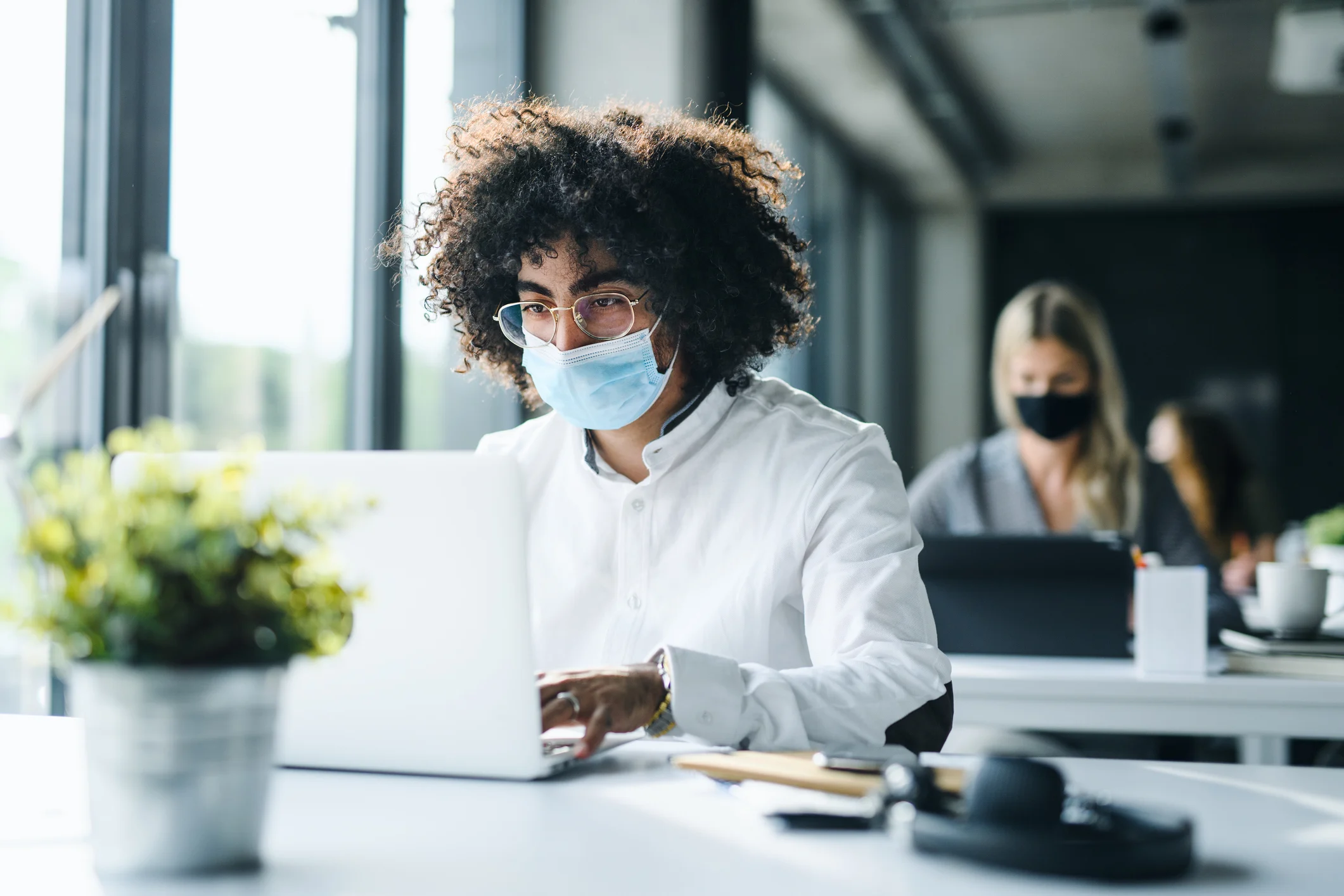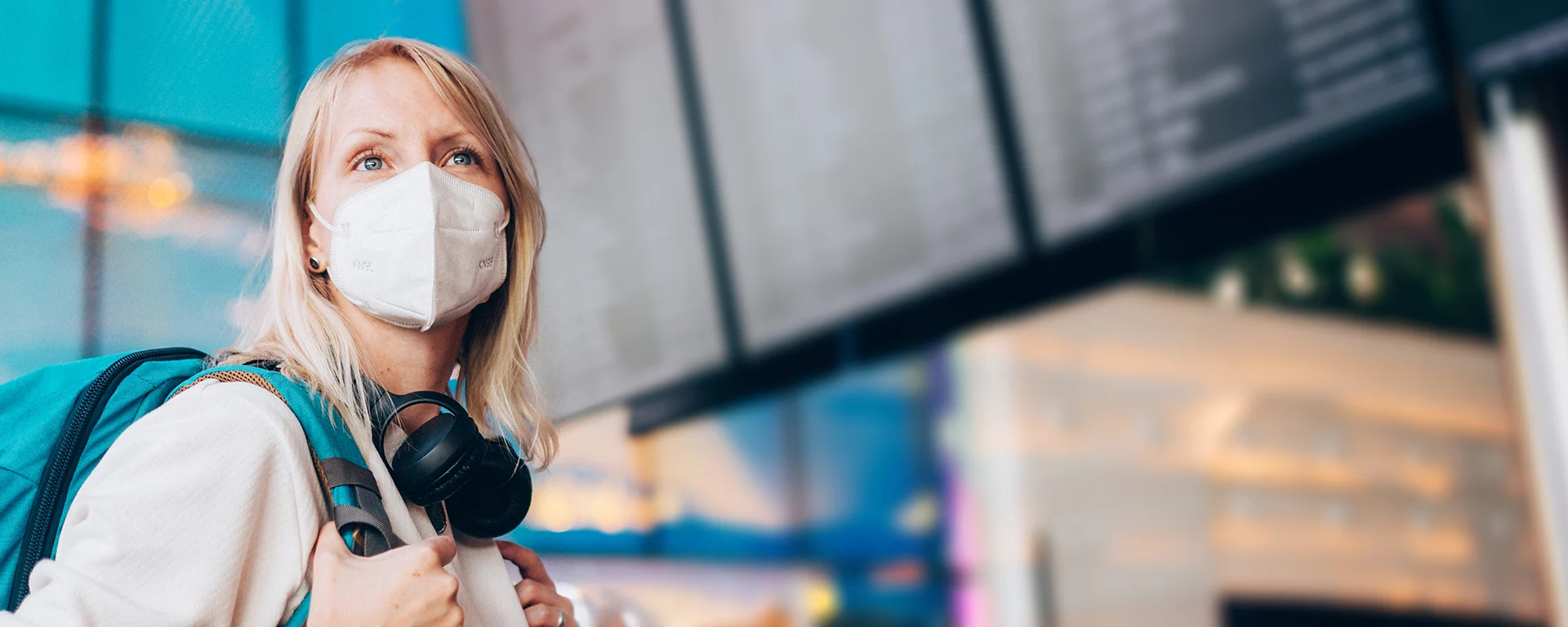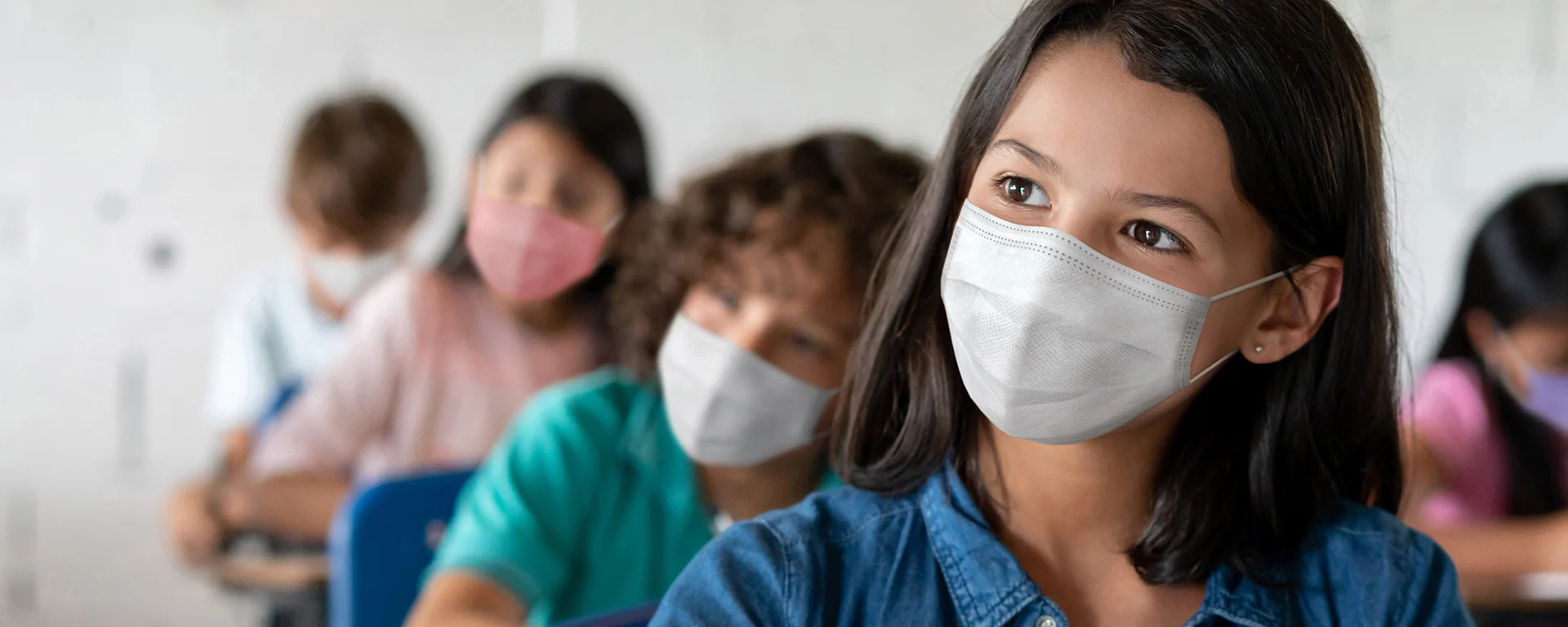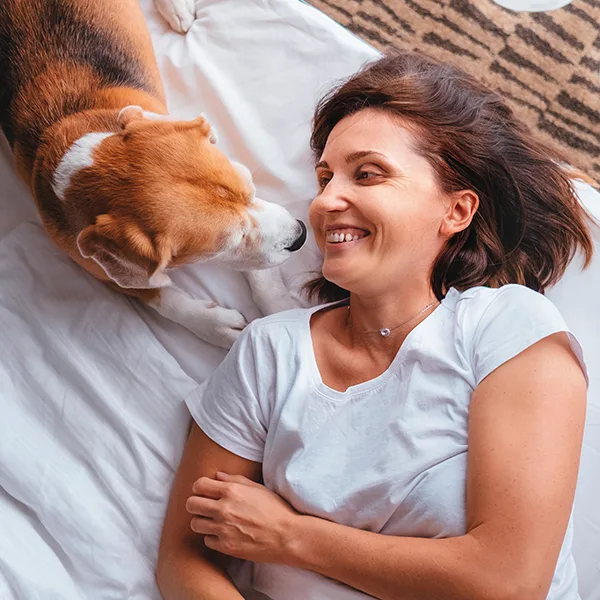Domestic Flying in the COVID-19 Era
Taking a routine domestic flight is a different experience than it was pre-pandemic. Here’s what to expect — and how to prepare.
Before the pandemic, I flew at least once a month. But in March 2020, my travels ceased and I didn’t leave New England, where I live, for nearly a year. It wasn’t until after I was vaccinated in 2021 that I took my first COVID-era flight to see family in Pittsburgh. The experience was very different from the pre-pandemic days.
The biggest change: masks
The most pronounced change I noticed on that flight in July 2021 was that masks were required in airports and on planes, except during eating and drinking. I chose to wear a N95 mask that I purchased from Project N95 at all times. Once a plane’s air filtration system is running, the air inside is cleaned exceptionally well, but that doesn’t mean the trip is COVID-free. I knew that I could be exposed to COVID-19 when I was crunched up against others in poorly ventilated spaces during other parts of the trip: in the security line, while boarding and deplaning, and while sitting on the tarmac.
Many of my fellow travelers were more relaxed about mask-wearing. Some wore their masks below their noses, while others continually removed theirs to talk on the phone or to eat. Even when properly wearing a mask was required on US public transportation, the reality was that many did not adhere to the rules. So I wanted to be extra cautious by keeping my well-fitting N95 on at all times.
Wearing a mask is no longer required on planes or in airports, but I still wear one when I fly. COVID-19 levels continue to rise and fall across the nation, and I won’t know where the people around me are coming from. Plus, my trusty N95s help protect me from other respiratory viruses, including the flu. Why not do what I can to avoid getting sick while I travel?
Check the COVID-19 risk where you’re going
Before I left for Pittsburgh, I checked the community transmission risk there. Today you can use the CDC’s COVID-19 County Check widget to check the COVID-19 hospital admission levels. Fortunately, I found the COVID-19 risk at my destination was low. However, I was mindful that I would be interacting with people who were traveling from all over the country and many parts of the world. So, the risk in airports and on planes might be higher than at my destination.
Monitor for COVID-19 after your trip
Even if you are cautious, there’s always a risk you will be exposed to COVID-19 while traveling.
I did not develop any symptoms after my trip to Pittsburgh, but I decided to use the COVID Risk Quiz when I got back to see if I should consider getting a test since I was planning to spend a few days unmasked with family. Because of my risk factors, the Quiz suggested that I consider taking a test. I took two antigen tests over two days to ensure I wasn’t contagious, and the results were negative both times - a nice relief and a great way to top off a pleasant trip. (I took this trip a while ago. These days, the FDA recommends that people without symptoms take three tests, with a 48-hour break between each test. If you test negative all three times, you can be 90% sure that you’re not infected.)
Whenever you test yourself for COVID at home — whether you’re positive or negative — you should report your result. Every test that gets reported helps public health teams better understand where outbreaks are happening, so they can get help to people who need it.
If you’re returning to the world of domestic travel after a long stay away, sensible precautions like masking, checking COVID-19 levels, and testing can help you feel safer, too.






